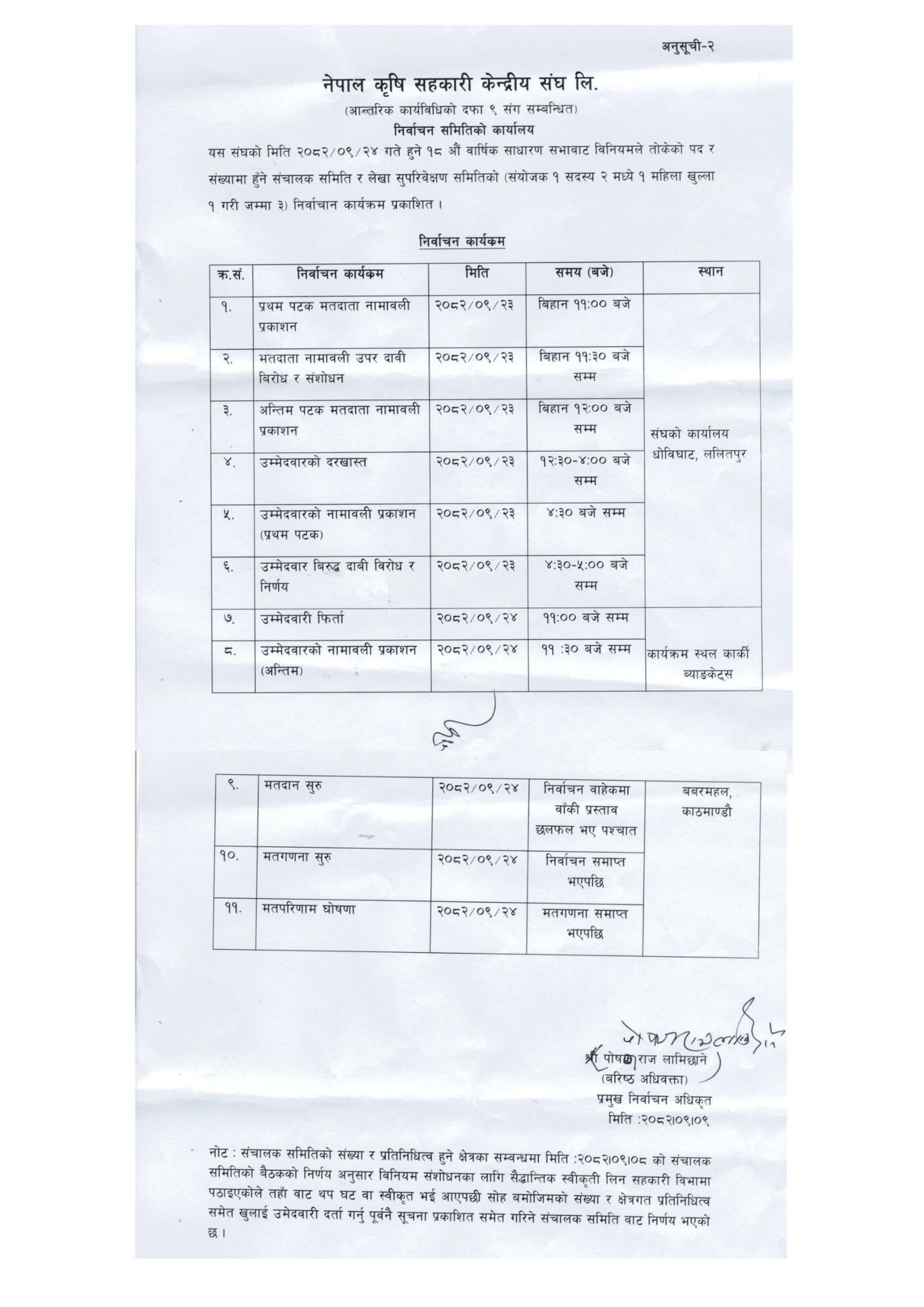
The cooperative movement in Nepal has evolved from traditional systems of mutual support to a formal, nationwide development force. Long before any legal structure existed, rural communities practiced indigenous forms of cooperation such as Parma (exchange of labor), Dhikuti (rotating savings), and Guthi (cultural and religious trusts). These systems were deeply rooted in social values and local trust, laying a foundation for the spirit of cooperation among Nepalis.
Nepal formally entered the cooperative era in 1956, following the end of the Rana regime and the political changes of 1951, which introduced democratic governance. That same year, the first credit cooperative-called the Bakhan Multi-Purpose Cooperative Society was established in Chitwan district. This marked the beginning of organized cooperative efforts aimed at tackling rural poverty and access to finance.
One of the pioneers of Nepal’s cooperative movement was Badri Pd. Neupane, widely regarded for his early leadership in promoting cooperative education and organization. Likewise, Dr. Yadav Prasad Pant, an economist and former finance minister, played a major role in shaping policy and integrating cooperative values into Nepal’s rural development strategies. Another notable name is Prof. Dr. Devendra Raj Pandey, who consistently advocated for community empowerment through local ownership models, including cooperatives.
During the Panchayat era (1960-1990), cooperatives became part of national planning. The government launched the Sajha Program to strengthen cooperative-based agricultural distribution and marketing. However, these efforts were largely state-driven, and due to bureaucratic control and political interference, many cooperatives failed to operate sustainably.
After the restoration of democracy in 1990, the cooperative movement gained new momentum. The introduction of the Cooperative Act in 1992 gave citizens the freedom to form and manage cooperatives independently. This legal reform triggered a rapid increase in the number of cooperatives across Nepal in diverse sectors such as savings and credit, agriculture, dairy, consumer goods, and small-scale industries.
In recent decades, the cooperative sector has emerged as a significant contributor to Nepal’s economy and social fabric. The Constitution of Nepal (2015) recognized the cooperative sector as one of the three pillars of national development-alongside the public and private sectors. Today, cooperatives have become key instruments for empowering women, smallholder farmers, and marginalized communities by promoting local entrepreneurship and financial inclusion.
You may Read : What is cooperative ?
Timeline: History of the Cooperative in Nepal
Pre-1950s: Traditional Roots
Before 1950: Informal cooperative practices like Parma (labor exchange), Dhikuti (rotating savings), and Guthi (community trusts) were widely used in rural Nepal. These traditional systems reflected collective effort and mutual support.
1951: Beginning of Modern Nepal
The fall of the Rana regime and introduction of democracy created an opening for new development approaches, including formal cooperatives.
1956: First Formal Cooperative
Establishment of the Department of Cooperatives under the Ministry of Agriculture.
First cooperative society registered in Chitwan, a credit cooperative aimed at providing loans to flood-affected farmers.
This year marks the official start of the modern cooperative movement in Nepal.
1963–1970: Expansion and State Control
1963: Launch of the Sajha Cooperative Program, aimed at distributing agricultural inputs and consumer goods.
Late 1960s: Expansion of cooperatives in rural areas, but most were state-run with limited community participation.
1970s–1980s: Slow Growth and Challenges
Cooperatives struggled due to political interference, poor governance, and lack of trained manpower.
Many cooperatives became inactive or collapsed during this period.
1990: Democratic Revolution
Restoration of multi-party democracy after the People’s Movement (Jana Andolan I).
Civil society and local empowerment began receiving more focus.
1992: Legal Reform and New Energy
The Cooperative Act, 1992 was enacted.
For the first time, cooperatives could be registered, owned, and managed by citizens without government control.
This triggered a rapid increase in cooperatives, especially in savings and credit sectors.
1995: Cooperative Awareness Begins Spreading
NGOs and INGOs began promoting cooperatives as tools for rural development.
Start of cooperatives as platforms for women’s economic empowerment and self-help groups.
1996: People's War Begins
Maoist insurgency (People's War) started, affecting rural areas heavily.
Cooperatives in conflict-affected regions faced decline or closure.
However, in relatively peaceful areas, cooperatives continued to grow, particularly around women’s groups and microfinance.
2000–2005: Revival and International Support
International donor agencies like UNDP, IFAD, and ILO supported cooperative-based rural development.
Cooperatives expanded in sectors like dairy, tea, vegetable farming, and artisanship.
Community-based savings and credit groups turned into registered cooperatives.
2006: Peace Process and Policy Inclusion
Signing of Comprehensive Peace Accord restored some stability.
Cooperatives were included in interim development plans as engines of inclusive economic growth.
2008: Federal Democratic Republic Declared
Cooperatives included in political discourse as models of economic democracy.
Start of policy development around federal cooperative structures.
2010: National Cooperative Federation Strengthens
The National Cooperative Federation of Nepal (NCFN) expanded its role in coordination and advocacy.
Launch of Cooperative Bank and various central-level cooperative unions.
2013: Cooperative Policy Introduced
Nepal introduced its first national cooperative policy, providing guidelines for governance, auditing, and sustainability.
2015: New Constitution Recognizes Cooperatives
The Constitution of Nepal (2015) officially recognized cooperatives as one of the three pillars of the national economy, alongside the public and private sectors.
This was a major milestone in legitimizing the sector at a constitutional level.
2017–2020: Digital and Institutional Growth
Cooperatives began embracing digital finance, mobile banking, and MIS systems.
2025 : National Cooperatives Regulatory Authority establishment to to address the problems surrounding cooperatives and their depositors




.jpg)
